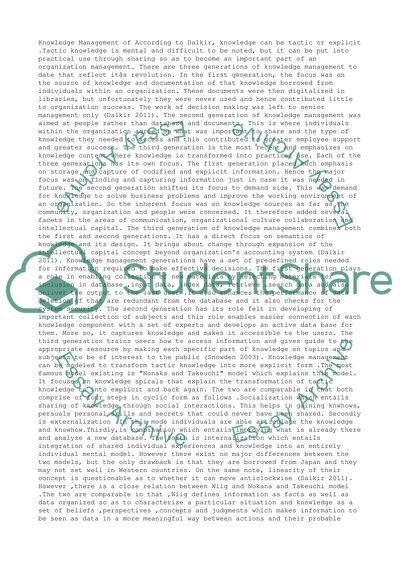Knowledge Management Essay Example | Topics and Well Written Essays - 750 words. Retrieved from https://studentshare.org/management/1470686-knowledge-management
Knowledge Management Essay Example | Topics and Well Written Essays - 750 Words. https://studentshare.org/management/1470686-knowledge-management.


